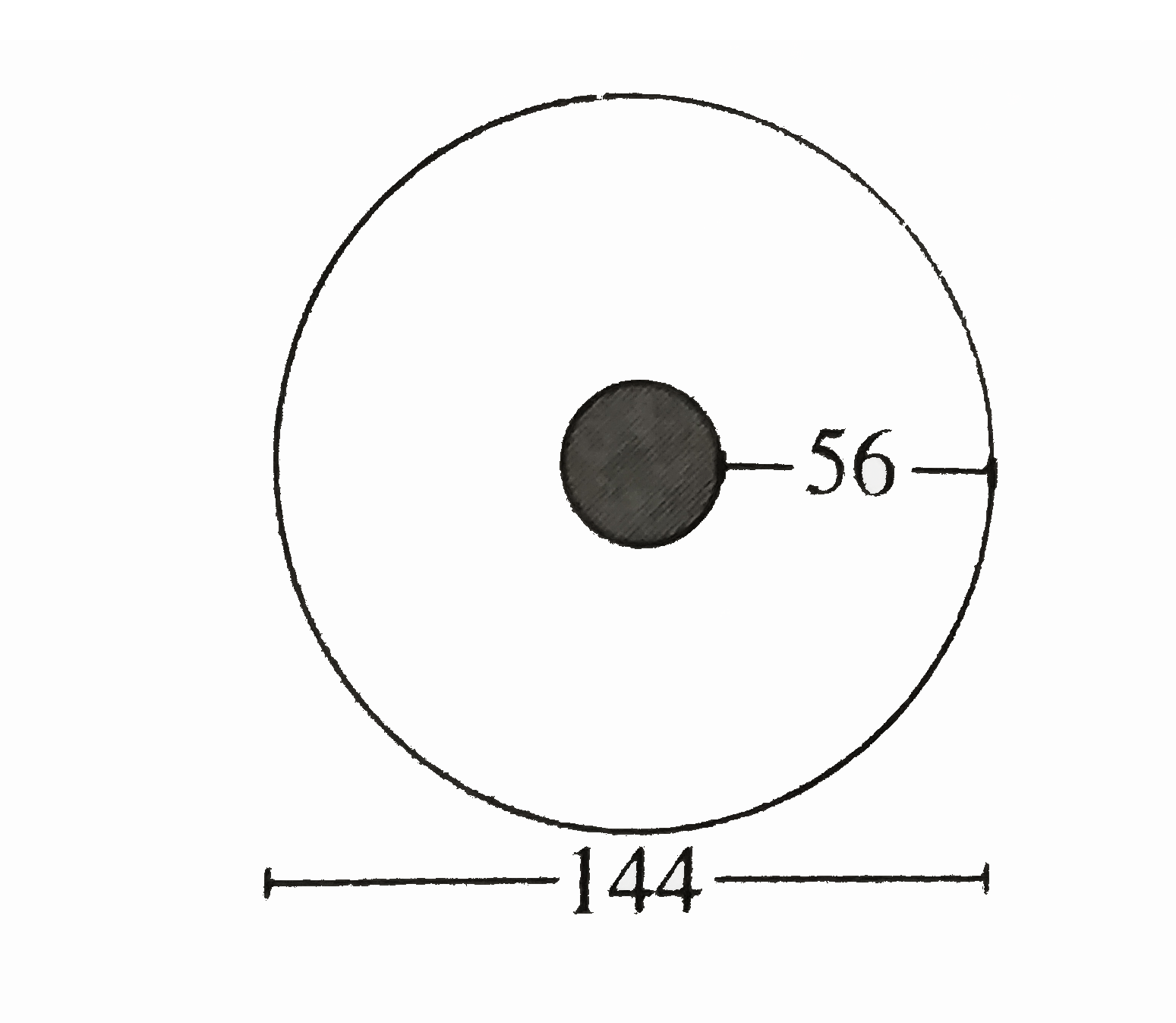The radius of a thin wire is 0.16mm. The area of cross section taking significant figures into consideration in square millimeter is
0.08
0.080
0.0804
0.080384
The correct Answer is:B
To find the area of cross-section of a thin wire given its radius, we can follow these steps:
1. Identify the given radius: The radius of the thin wire is given as r=0.16mm.
2. Use the formula for the area of a circle: The area A of the cross-section of the wire can be calculated using the formula:
A=πr2
3. Substitute the radius into the formula: Plugging in the value of the radius:
A=π(0.16mm)2
4. Calculate r2: First, calculate 0.162:
0.162=0.0256mm2
5. Multiply by π: Now, multiply by π (approximately 3.14159):
A≈3.14159×0.0256≈0.080384mm2
6. Determine significant figures: The radius 0.16mm has 2 significant figures. Therefore, the area must also be expressed with 2 significant figures.
7. Round the area: The calculated area 0.080384mm2 needs to be rounded to 2 significant figures:
- The first rounding gives 0.08038mm2 (still 5 significant figures).
- The second rounding gives 0.0804mm2 (now 4 significant figures).
- The final rounding gives 0.080mm2 (which has 2 significant figures).
8. Final answer: The area of cross-section taking significant figures into consideration is:
A≈0.080mm2
A=πr2
A=π(0.16mm)2
0.162=0.0256mm2
A≈3.14159×0.0256≈0.080384mm2
- The first rounding gives 0.08038mm2 (still 5 significant figures).
- The second rounding gives 0.0804mm2 (now 4 significant figures).
- The final rounding gives 0.080mm2 (which has 2 significant figures).
A≈0.080mm2
Topper's Solved these Questions
- UNITS, DIMENSIONS & ERROR ANALYSIS BOOK - DC PANDEY ENGLISHCHAPTER - UNITS, DIMENSIONS & ERROR ANALYSIS EXERCISE - Check Point 1.3
10 Videos
- UNITS, DIMENSIONS & ERROR ANALYSIS BOOK - DC PANDEY ENGLISHCHAPTER - UNITS, DIMENSIONS & ERROR ANALYSIS EXERCISE - Chapter exercises (taking it together)
61 Videos
- UNITS, DIMENSIONS & ERROR ANALYSIS BOOK - DC PANDEY ENGLISHCHAPTER - UNITS, DIMENSIONS & ERROR ANALYSIS EXERCISE - Check Point 1.1
25 Videos
- UNIT AND DIMENSIONSBOOK - DC PANDEY ENGLISHCHAPTER - UNIT AND DIMENSIONSEXERCISE - Assertion And Reason
2 Videos
- VECTORSBOOK - DC PANDEY ENGLISHCHAPTER - VECTORSEXERCISE - Medical enrances gallery
9 Videos
Similar Questions
Knowledge Check
a thin slice is cut from a bagel, creating the cross - section represented below . The diameter of the bagel is 144 mm and the width from the inner edge of the bagel to the outer edge is uniformly 56 mm. Which of the following is closest to the area , in square millimeters , of the shaded empty space inside the cross -section of the bagel ?
 A100B450C800D3,200
A100B450C800D3,200The Poisson's ratio of a material is 0.4. If a force is applied to a wire of this material, there is a decrease of cross-sectional area by 2%. The percentage increase in its length is
A3%B2.5%C1%D0.5%
Considering a wire of non-uniform cross-section as shown.If the area of cross-section at A is double of the area of cross-section at point B.Ratio of heat energy dissipated in a unit volume per unit time at points A and B is
_PHY_E05_279_Q01.png)
View SolutionFrom some instruments current measured is I=10.0amp, potential different measured is V=100.0V, length of wire is 31.4cm, and diameter of wire is 2.00mm (all in correct significant figure). The resistivity of wire (in correct significant figures)will be (use π=3.14)
View SolutionA square loop of length L is made of wire of uniform cross-section carrying current l as shown in figure then magnetic field at centre of square is
View SolutionA very long cylindrical wire is carrying a current I0 distriuted uniformly over its cross-section area. O is the centre of the cross-section of the wire and the direction of current in into the plane of the figure. The value ∫BA→B.→dl along the path AB (from A to B ) is

View SolutionA wire of radius R having uniform cross section in which steady current l is flowing. Then
View SolutionWhen a force of 100 N is applied on a wire of uniform cross-section as shown in figure then length of wire is increased by 1 mm. Energy stored in the wire will be

View Solution
